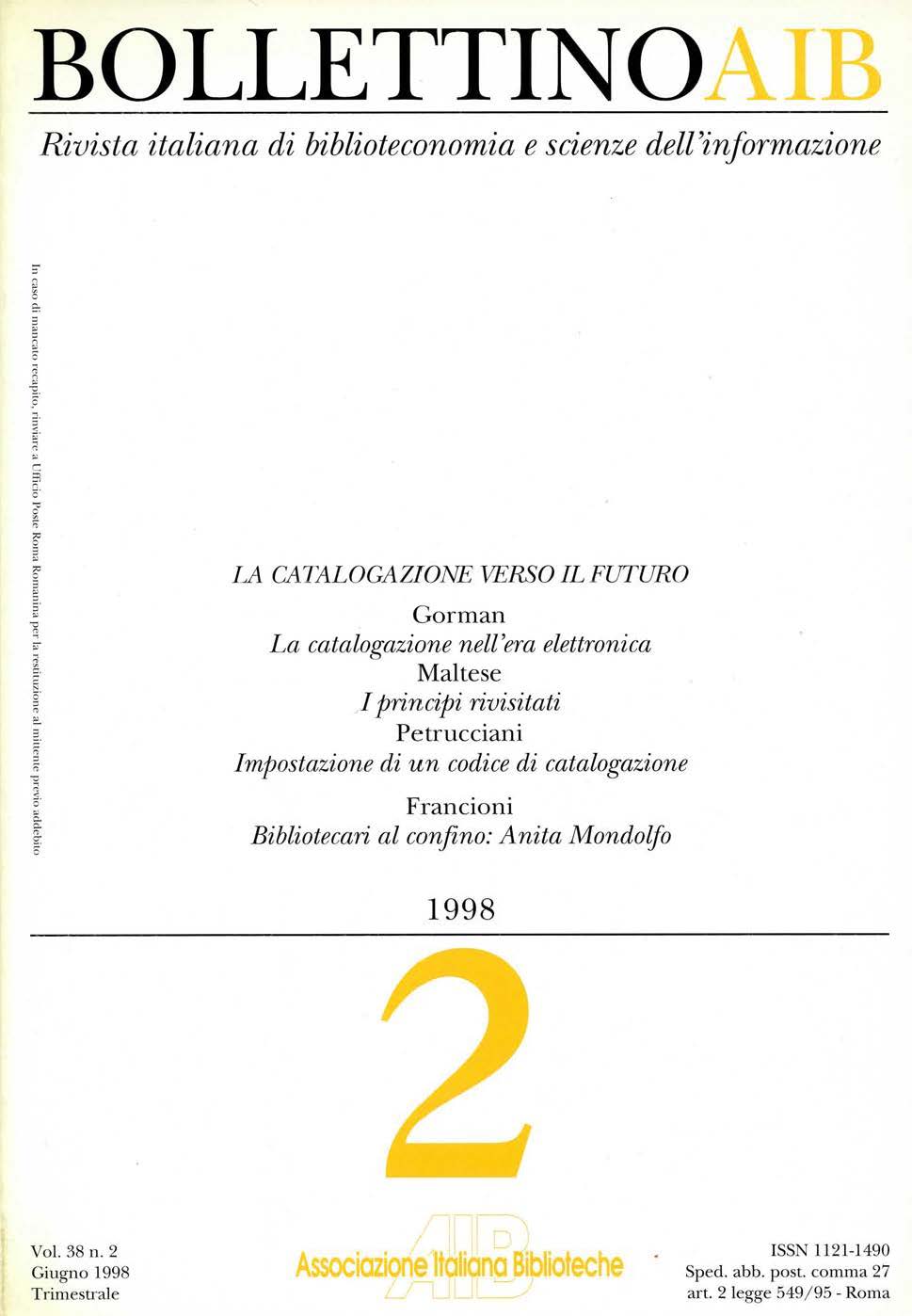Problemi di impostazione di un codice di catalogazione
Contenuto principale dell'articolo
Abstract
Major cataloguing codes, including AACR2 and the Regole italiane di catalogazione per autori (RICA), were shaped twenty or more years ago, in a very different context (available media and their packaging, tools and methods for catalogue building and use, search and reading practices). While the functions of the catalogue are substantially those stated more than a century ago by C.A. Cutter, cataloguing codes are a bridge between general principles and actual catalogue making and therefore cannot be exempt from change.
RICA is a "lubetzkyan" code, somewhat different from the ISBD-based framework of the AACR2. The rules for description follow those for the choice and form of entry and the latter are not introduced by statements of scope and object, definitions, etc. While the textual framework of the ISBDs and other standards is now well known and accepted by Italian librarians, the theoretical differences between the "Lubetzky model" and the "Gorman model", as regards the relationship between description and choice of access points and the function of the main entry, do not seem to be fully made clear. According to Lubetzky, the choice of the main entry was the first decision to be taken and both AACR2 and RICA follow this path, while it is not easy to anticipate how to organize a code aiming at a set of access points of equal value. The main entry debate - as Carpenter showed - is not closed, maybe because it entails judgment of convenience for various types of documents and users. As a matter of fact, main entries, albeit somewhat redundant with ISBD records, are generally used in electronic national bibliographies and OPACs.
The electronic catalogue has made easy the retrieval of a known item, so that many concerns of catalogue codes of the last generation are no more relevant (e.g., added entries vs references for different titles and some other alternative access points, or "simpler" headings for complex bodies or works). On the contrary, OPACs are suffering for the proliferation of many similar access points or records and for the dispersion of related headings or records, hindering the exploration of their contents.
As in subject indexing, increasing complexity is to be mastered with analysis and systematization, e.g. with a clearer distinction between access points for a work and for the various contributions to its editions, and with a shift, when possible, from the choice of access points for a single record to the authority system (better, the controlled access system).
A clearer development of the sequence of choices which the cataloguer faces can lead to a simpler code. The Italian code, in fact, is a "scholarly" code, weighing its words, targeted to a mature and learned cataloguer.
In conclusion, the detailed, word-by-word analysis of the code by the Review Committee has shown, in my opinion, the need for a systematic revision of the text, to make it clearer, more structured, simple and effective, while preserving its basic choices.
Dettagli dell'articolo

Questo lavoro è fornito con la licenza Creative Commons Attribuzione - Condividi allo stesso modo 4.0.
